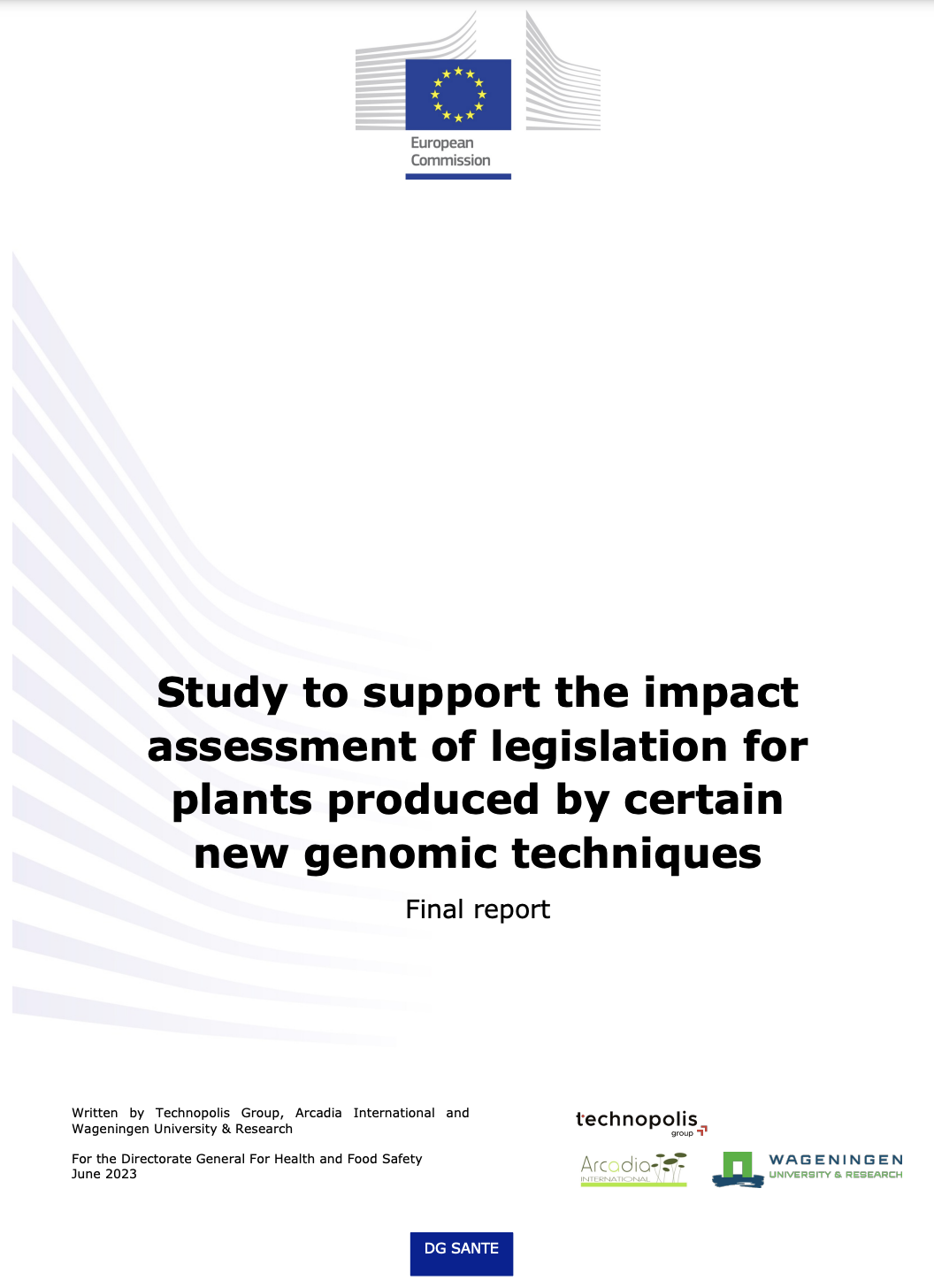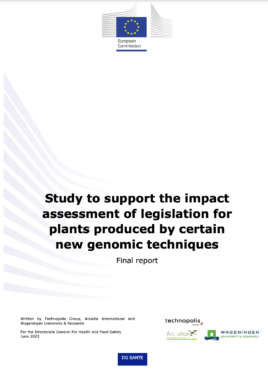Study to support the impact assessment of legislation for plants produced by certain new genomic techniques
Date de publication : 7 juillet 2023 | langue de rapport : EN
Scientific developments of plant breeding technologies have continued and have reached – by scientific means – extraordinary speed, in some cases posing regulatory and ethical concerns. Discoveries such as CRISPR/Cas and their uptake, were described by the plant breeding community as new breeding techniques or as new genomic techniques (NGTs) in the EU regulatory context. These NGTs are revolutionizing plant breeding by shortening the research and development process while breeding plants with specific traits such as higher yield, pest or draught resistance, or improved nutritious values. Yet, the European Court of Justice (CJEU) ruled in 2018 that organisms obtained by new mutagenesis techniques are genetically modified organisms (GMOs) and fall within the scope of the EU legislation on GMOs. The ruling was met with disbelief by the scientific communities. A 2021 study by the JRC concluded that the current legal framework is not fit for purpose. The EC launched an inception impact assessment and aimed to introduce legislation for plants produced by certain NGTs.
We provided the support study for the impact assessment by doing a thorough literature analysis, conducting around 60 interviews, launching a survey addressing 400 targeted stakeholders, and organising focus groups and case studies.
The EC had set a few parameters what a new legislative proposal should entail:
- It should help maintaining a high level of protection of human and animal health and of the environment and thus keep the precautionary principle.
- It should also enable the development and commercialisation of plants and plant products that would contribute to the innovation and sustainability objectives of the ECs policy strategies such as the European Green Deal.
- And finally, a new legislation should have an economic impact: enhance the competitiveness of the EU agri-food sector and provide a level-playing field for its operators.
With these three general objectives in mind, the EC developed a few so-called options. The current situation with the GMO legislation is treated as ‘Baseline option’. Other options included combinations of key components: adapted risk assessment, labelling and traceability requirements, sustainability incentives, and sustainability requirements. These options were then transformed and described by the study team in form of scenarios.
The analysed options vary in terms of achieving the specific objectives (effectiveness) – and in terms of costs (efficiency).
The analysis confirmed that under the current legal framework – the Baseline option –the mentioned objectives cannot be achieved. In fact, regulatory costs and administrative burden are maintained and remain prohibitively high for SMEs and newcomers. Given the expected regulatory divergence between the EU and third countries, enforcement and traceability costs are expected to increase for all, including the organic sector. Due to the limited detectability and differentiability of NGTs, there is a risk of presence of NGTs in imported (and subsequently processed) food products while consumer choice would remain limited to conventional and organic products. There are substantially negative impacts on plant breeders, competitiveness, trade, R&D, and more moderately, on farmers and the wider value chain. The relative competitiveness of SMEs in plant breeding would also not improve. Social and environmental opportunities for improving health, environment, and global food security may not be realised timely.
The option of an adapted risk assessment and detection requirements was not well received by industry mainly due to expected (still) high costs. It would lead to a certain level of NGTs on the market which would potentially impact the costs of the organic market to avoid admixture (buffer strips). Yet, since traceability and labelling would remain, this would suit the organics sector.
The (sub)options of authorization with sustainability incentives obtained mixed opinions. In particular, a sustainability label was met with scepticism by all stakeholders. The main weakness of this option is the uncertainty of what would be considered a sustainable trait. Stakeholders fear that these considerations may not align with actual sustainability in farming systems.
Notification for certain products obtainable by natural/conventional plant breeding – is the preferred option by several, but not all stakeholders. The option has the potential to have a considerable number of NGT plants with positive environmental effects developed after 2030. The key uncertainty in this scenario is the evolution of consumer preferences and awareness of the NGT topic up to 2030 and beyond. This could greatly impact the demand for those products. The expected growth would encourage investments in R&D, scientific and technological developments, and strengthen the knowledge capacities in the EU. Whether or not SMEs benefit substantially is uncertain; this depends to some extent on their capacities to obtain affordable licences to use these, often IP-protected, technologies. This option has main impacts in costs. Plant breeders may benefit from the most substantial cost reductions (between 70% to 90% of total authorisation costs depending on the system put in place). For SMEs such substantial cost reduction is expected to lead to more SMEs and newcomers entering the market of NGTs. Depending on the level of adoption of NGTs, various impacts can be envisioned: higher costs for the organics sector, investment needs of the regulating authorities but available plants that help reducing environmental pressures.
In essence, every legislative change comes with several potential positive and negative impacts. They are positive for economic operators, research and innovation actors, consumers, and the environment. Yet, there are also risks for the established organic and GMO-free sectors.
Given the high environmental, social, and economic potential, should the EU maintain the legal status quo? The EU requires food and feed imports. It is expected that the segregation costs for securing conventional and organic food and feedstuff from GMO and NGT plants from abroad will increase and be passed on to the European consumers. NGTs can become a key component for a sustainable agriculture and food security in the EU. For this to happen, it is also advisable to seek coherence with other parts of the wider legislative framework such as intellectual property rights, as well as farming systems.
The study and its extensive annex are also available from the EU’s publication office.








